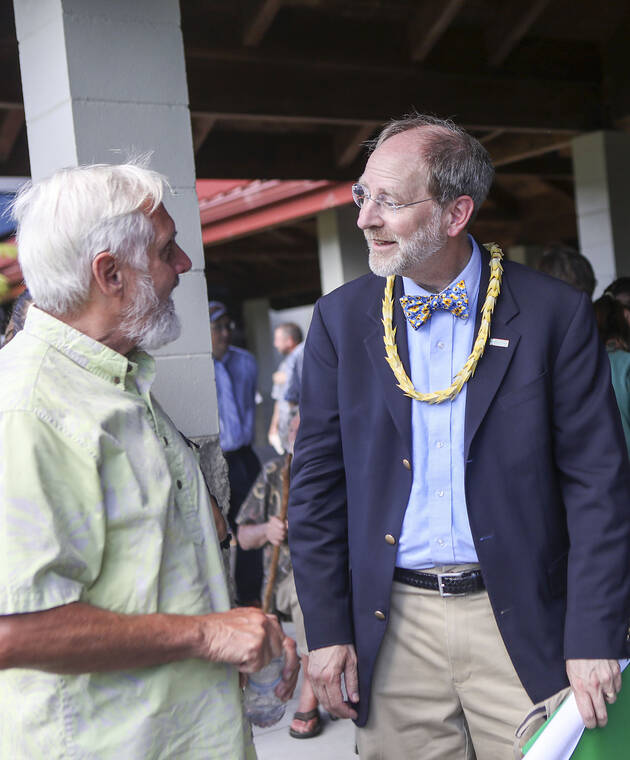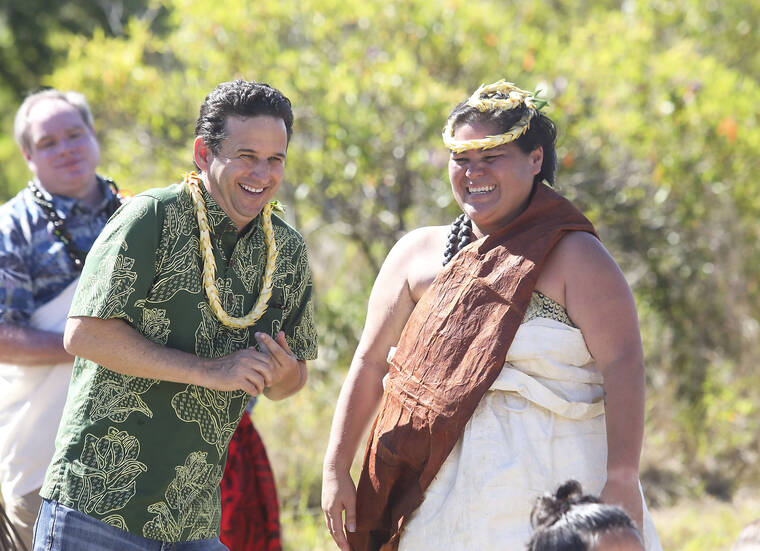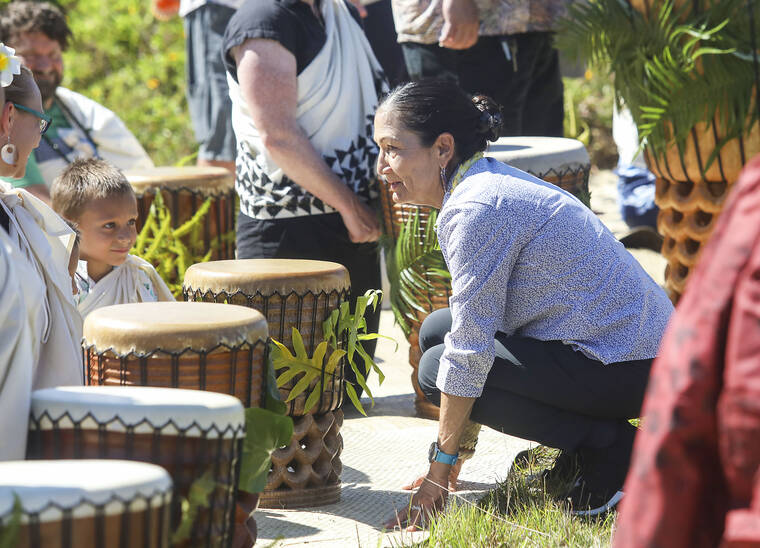Work on a new home for the Hawaiian Volcano Observatory kicked off Wednesday with a ceremony attended by federal officials.
During the 2018 eruption of Kilauea, repeated collapses of the Halema‘uma‘u crater floor damaged HVO’s primary office at the Jaggar Museum in Hawaii Volcanoes National Park to the point of unusability.
But after working out of temporary headquarters at the Hilo Iron Works building for several years, the observatory will get new digs at the University of Hawaii at Hilo.
At a blessing and welcoming ceremony at the site Wednesday, UH-Hilo Chancellor Bonnie Irwin was joined by U.S. Geological Survey Director David Applegate, U.S. Sen. Brian Schatz and U.S. Interior Secretary Deb Haaland to celebrate the partnership that made the new facility possible.
The facility, when built, will be a two-story, 60,000-square-foot building on a 6.8-acre site mauka of the intersection of Komohana and Nowelo streets in Hilo. The building will house not only HVO, but the Pacific Island Ecosystems Research Center, which currently is operating out of aging buildings in HVNP.
Applegate described the facility as “60,000 square feet of laboratories, office space and a cutting-edge operations and monitoring center that will provide roughly 100 staff members a truly inspiring space to focus on science in our changing world.”
The project was funded in 2019 through a disaster supplemental relief bill that allocated $49 million for construction. Full construction is estimated to be complete by the middle of 2025.
“Today we mark a milestone towards getting those teams a facility that equals the contributions they have made to this county, the state of Hawaii, and to the country,” Schatz said. “For HVO, it’s a facility that will be a resilient base of operations to protect our communities from volcanic hazards, and for PIERC it will be its first permanent home and a place where it will continue to serve Hawaii and the Pacific.”
Schatz said he and Haaland had to fight to keep HVO on the Big Island, as some proposals for a replacement facility would have the observatory moved to Oahu.
Ultimately, Schatz said, the decision to locate the facility at UH-Hilo will benefit both scientists and students, and will “add to the Big Island’s growing reputation as a center for research and science.”
The facility site is located next to the U.S. Department of Agriculture’s Forest Service Institute of Pacific Islands Forestry and the U.S. Pacific Basin Agricultural Research Center.
“With this new facility, university students will have opportunities to grow and advance their careers in science so that one day they are the ones conducting the hazard or volcano monitoring or making the next scientific discovery,” Haaland said.
Email Michael Brestovansky at mbrestovansky@hawaiitribune-herald.com.













